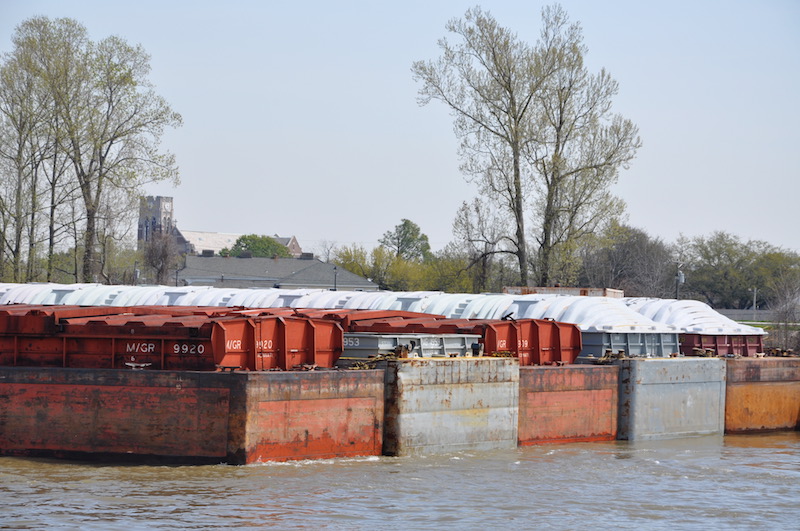Over the better part of the past year, the barge industry has made a comeback, upping utilization on both the dry and liquid sides.
A year ago there were barges parked all over the system, and this year there have been times when there were no dry cargo barges available. This has helped fatten barge rates, and some experts expect those rates to either improve or, at least, remain steady. A truce has been called in the “trade war” between the U.S. and China, and grain cargoes, export coal, frack sand and other commodities look to remain strong going forward.
“A few months ago there were barges available, now there are no open barges,” Peter Stephaich, chairman and CEO of Campbell Transportation Co., Pittsburgh, said this week at the Inland Marine Expo in St. Louis. “We would like to take on some spot work, but we just can’t.”

Peter Stephaich, chairman and CEO of Campbell Transportation Co. Ken Hocke photo
But Stephaich said although business has picked up, there are still some real challenges now and in the future. He mentioned the increase in export coal but cautioned, “How long will that last? It’s long haul that sucks up a lot of barges, but how long will that last?”
Looking forward, the overbuilding of equipment over a number of years has left the industry will a young barge fleet. “There are too many barges in the fleet,” he said. Jeffboat, one of the most prolific builders of barges for generations, closed down its operations this month. “It’s probably good for the industry. It keeps barge capacity from increasing quickly.”
Stephaich added that he expects to see more consolidation within the industry. “People don’t usually sell companies because they want to,” he said. “They sell them because they have to. I think you’re going to see a smaller industry.”
As for Washington, D.C., Stephaich said there are lots of challenges there. He has served in an executive capacity for the American Waterways Operators, National Waterways Foundation, Waterways Council and other lobbying groups over the past 30 years. “There is so much regulation. It’s necessary for all of us to be as engaged as we can,” he said. “You know we develop some pretty close relationships with some of these folks. We’ve come a long way, but it takes a lot of work.”
Some of the biggest support for President Donald Trump in the 2016 election came from districts along the Ohio River. “He was our guy. We were elated,” Stephaich said. “But we’re very disappointed. He’s talking about privatizing part of the infrastructure package. That’s not sustainable. It’s a real problem.”
Maintaining infrastructure with an Inland Waterways Trust Fund of about $400 million is acceptable, and the barge industry would like to see that continue. The Olmsted Locks and Dam along the Ohio River has eaten up a big chunk of federal funds during its laborious renovation process. The project, which is 85% funded by the government and 15% funded by industry, will finally be completed this summer. “Other projects will go back to being funded 50-50,” said Stephaich, “so that will shrink the budget to about $230 million.” Industry lobbying groups are trying to find ways to get the trust fund back to around $400 million.
Stephaich remains optimistic regardless of the challenges. “The highways are congested. The railways are congested,” he said. “The barge folks, we need to get everybody pulling in the same direction.”




